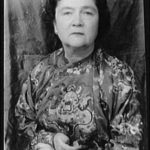A hazard of being a watcher, observer and sometimes writer is that I will never be a trendsetter. I chew on the news until it pisses me off and then I state the obvious. Loudly. I cry at old tragedies and stay numb while new tragedies unfold, fade from everyday hubris and Go Fund Me sites wither. In keeping with my late-is-better-than-never approach to popular culture, I saw The Florida Project recently. Here is the link to the New York Times Review which will answer questions about stars (Willem Dafoe and three amazing child actors), plot and other questions if you haven’t seen it.
The story is set in an old motel named the Magic Castle on Hwy. 192 in Kissimmee, FL in the shadow of Disney world’s Cinderella Castle. It’s a real place which has seen its share of druggies, failed scam artists (successful scammers move to South Florida) and other folks who can’t get a job that allows them to establish a credit score. It is also run by some compassionate managers who are reflected in the film version of the story about three kids who are growing up in the motel. The children–one boy and two girls–kill time and thus their childhoods while their single mothers scrap, work and deal with the dangers that beset those who live on the edge of society.
The end of the movie (spoiler alert!) shows the girls running from the Magic Castle to Cinderella’s Castle in the Disney park. Social workers have just taken Moonee (Brooklynn Prince) from her mother and the child will live with a foster family in Polk County.
A side note: Polk County is a real place. Rural and traditionally poor, its two claims to fame aside from country living and poverty (with the problems those engender) are the Publix headquarters in Lakeland, FL., and native son Agriculture Commissioner Adam Putnam. Putnam, who is currently running for governor, is famous for calling himself a “proud NRA sellout”–a ballsy statement in a state that has seen the Parkland and Pulse Nightclub shootings– and has changed the the rubric of health inspection on Florida to accommodate some failing grades for Publix stores in Tampa. For its part, Publix has donated $670,000 in the past three years to Putnam. In addition, there are some questionable family land deals which may have cost the Florida taxpayers.
In addition to the characters–which could be set anywhere and still ring true–the movie has an unusual foundation. It illustrates the need for fantasy that cuts across the social strata and isn’t limited to children.
Florida–in addition to Disney– has provided illusion along with good weather–to tourists for many decades. Other states name their cities after a documented geographical feature (example: Rock Hill, SC) or history (Cape Disappointment in Washington state). In Florida, if a real estate development is named Tuscany Downs, you can bet there isn’t even a pizza joint for miles. Waterside means a view of a drainage canal. And if a street is named Palm Tree Lane or Orange Blossom Circle, all palm and orange trees in the area succumbed to blights a decade ago.
The Florida Project is a sensitive depiction of the freedom of childhood as well as the price that children must pay to grow up when adults or life can’t support illusions anymore. As the girls run from the Magic Castle to Cinderella’s Castle, a place where the storied princess lived with her Prince, it’s difficult to believe that they will land in happily ever after.








You are spot on, Anne, about the illusions of both childhood and Florida peddled in Central Florida, especially Disney. Steven and I found the film not as eye-opening as others but relentlessly depressing, particularly the ending you describe.
As always, your deep knowledge of Florida’s past provides us with unexpected insights: I had no idea about Polk county politics or Publix’s contributions. Sad.